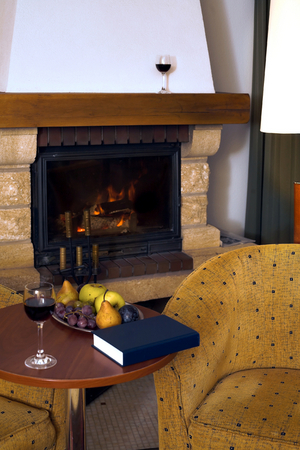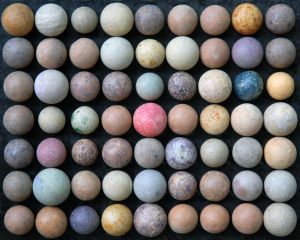There are few projects that give as much impact for such a small amount of money as interior painting. The entire look and feel of a room can be changed in a few hours. Painting is one of the most affordable ways to update the look of any room without spending a fortune. Paint can easily be changed when you tire of a color. It just takes the right tools, a little preparation and old- fashioned “elbow grease.
Choose the paint:
Choosing the right paint is the first step in the process. The brand of paint does not have to be the most expensive on the market, but a good quality paint from a reputable company will make the job much easier and will be more durable. I buy paint from Lowe’s and Home Depot and like the paint available at both stores. Speaking of durability, the room you will be painting will dictate the type of paint finish you decide to purchase. A flat paint finish is the least durable and cannot be easily cleaned. An eggshell or satin finish is a good choice for most walls. This type of finish can be washed but it is not so shiny as a semi-gloss or gloss that would look inappropriate for most rooms. It is a good idea to keep in mind also that the more glossy the paint, the more imperfections will show on the wall surface. Semi-gloss and high gloss paints are an excellent choice for doors and moldings though. These paint finishes are very durable and can be scrubbed clean. There are also special paints available for high moisture areas such as bathrooms and kitchens. These paints have ingredients in them to inhibit the growth of molds and mildew. They are well worth the small increase in cost, especially in bathrooms.
Choosing the color of paint can be exciting, but a daunting task at the same time. I recommend bringing several paint chips home to check the color in the room it will be used in. Most often, the tiny paint chips aren’t really large enough to give a good indication of how it will look on the walls and the store’s lighting is not an indication of how it will look when it’s in your home. Once I have narrowed my paint color choices to a couple, I then purchase the smallest quantity (usually a quart) to try on the walls. Some paint manufacturers are now offering smaller samples of paints to try. Just remember, when you do choose a custom color, the paint cannot be returned to the store for a refund. You don’t want to have the store custom mix two or three gallons of paint, only to get it home and hate it on the walls.
While you’re at the paint or home improvement store, there are a few other supplies you’ll need. You will need good quality paint brushes (1″ or 2″ angled for trim work ) or paint edger and refill pads, painters’ tape (not masking tape), paint rollers, a paint roller frame, an extension pole for the frame, trays and drop cloths. The painting trays are available in metal or plastic and can be used alone or with disposable clear plastic liners. I highly recommend buying several of the disposable liners. They make clean up so much easier and are very inexpensive. The tray stays clean and the liners can just be thrown away. This really saves time if the painting job can’t be completed all at one time. Paint rollers and brushes can also be stored with paint on them as long as they are completed sealed in an airtight plastic bag in the refrigerator or freezer. I learned this simple trick when doing murals and faux finishes. The paint will not dry in the cold and I would store my acrylic paint palettes as well as the brushes until I could finish the job. Obviously, they can’t be stored this way indefinitely but I have kept a wet paint brush for over a week in the refrigerator and even longer in the freezer without them becoming dry. Another item that helps control paint splatters is a paint roller shield. This will really help control the mess and snaps onto the roller frame and partially covers the roller.
You will also need spackling compound for filling nail holes and cracks, putty knife, sand paper and tack cloths. It’s also a good idea to have caulk with a caulking gun in case there are areas to fill in between the baseboards, crown molding and the drywall. If there are only nail holes to be repaired, you can skip all of these items and buy a tube of “Painters Nail Hole Filler” instead. This product is so easy to use. It comes with a smooth sponge tip applicator with a small hole to simply squeeze the filler over a nail hole. Dampen the sponge applicator tip for easier smoothing. It is a one step process without the need for a putty knife. It dries very quickly and can be painted over without sanding.
Preparation:
Remove all of the outlet and switch plate covers in the room. I put the covers with the screws in a clear zipper storage bag so they won’t get lost during the painting process. Preparation is a time- consuming necessity that will make the painting process so much smoother. Just in case the walls are very greasy or dirty, you will also want to purchase TSP (tri-sodium phosphate). Put on a pair of rubber gloves and wash the walls following the manufacturer’s directions and then rinse the walls with clear water. Let the walls dry and then it’s time to tape, patch and prime if necessary. If the new paint color is a stark contrast to the old paint, (the old paint is very dark and the new paint is pale or visa- versa), it will make the job easier to put on a coat of primer first. The paint store will tint the standard white primer for you at no cost and this will also lessen the number of coats of paint. The walls will also need a coat of primer if the paint type is changing from a oil-based paint to latex (water-based) paint. Also, if there are severe stains on the walls, a stain blocking primer will be your best friend. No matter how many coats of paint that are put on the wall, many stains (ink, permanent markers, etc.) will continue bleeding through the paint unless a primer is applied.
Paint:
It’s time for the fun part. Yes, I actually think painting is enjoyable, hard work but enjoyable. You will hear many painters insist that “cutting in” is the first step of the painting process, but I disagree. “Cutting in” is simply painting the areas that cannot be reached with the roller, such as next to the ceiling, trim and in the corners. I used to do it first also, but found myself “cutting in” much too large of an area. Now I roll on the paint and get as close as possible and then go back and “cut in” the areas the roller couldn’t reach. I waste much less time this way, just be careful that you’ve given the wall enough time to not be completely wet or you may touch it during the “cutting in” process.
Pour some of the paint into the painter’s tray and dip the roller in the paint tray. Start rolling it back and forth on the ridged area of the tray to evenly distribute the paint on the roller. The roller should be thoroughly covered but not dripping with paint. Begin rolling the paint on the highest part of the wall in a “W” or “M” design and then keep rolling until the area is evenly filled in and the paint is distributed. This process will be repeated each time the roller needs to be refilled with paint. Usually an area approximately 4′ x 4′ can be covered with each roller refill. Begin each new “W” beside the previous and then blend the paint edges together while still wet.
You will be pleasantly surprised how quickly a room can be completely. Be sure to allow the room you are painting to have adequate ventilation. Latex paint is really not very bothersome to most people, but sometimes it can still cause a headache. Open a window for a while to allow fresh air into the room if it does bother you, or if it is a bedroom that will be used that night. Stain blocking primers are usually much more bothersome and I recommend using them only in a well-ventilated room, especially if you are prone to headaches from chemical smells. I am one such person and although latex paint does not bother me at all, primers do give me a headache. Unfortunately they are sometimes a necessity, it just best to keep this in mind before beginning a painting project. Allow the first coat of paint to dry for about three hours before applying the second coat of paint. The drying time for the paint will depend on the temperature and humidity. As the paint begins to dry, it will be much easier to see any areas that haven’t been covered completely and it will be easier to determine how many coats of paint are needed.
Be sure to wait until the paint is dry before removing the drop cloths. The drop cloths can ruin floors and furniture if they still have wet paint on them and are removed too soon. Also be cautious when removing the paper’s tape as well. Good quality paint brushes and rollers are an investment worth taking care of and they will need to be washed thoroughly when the paint job is complete. There are special tools available to even help with the cleaning process of rollers and brushes. It’s always a good idea to allow the paint at least a full day to dry before hanging pictures back on the walls. Now it’s time to sit back and enjoy the rewards of your hard work!







